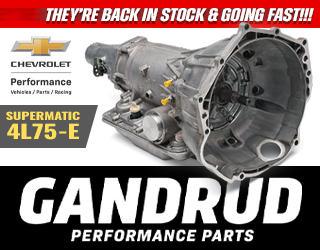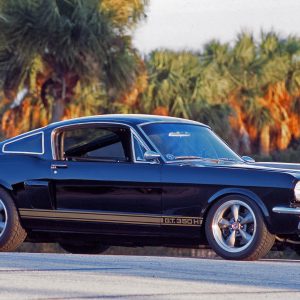Trucks
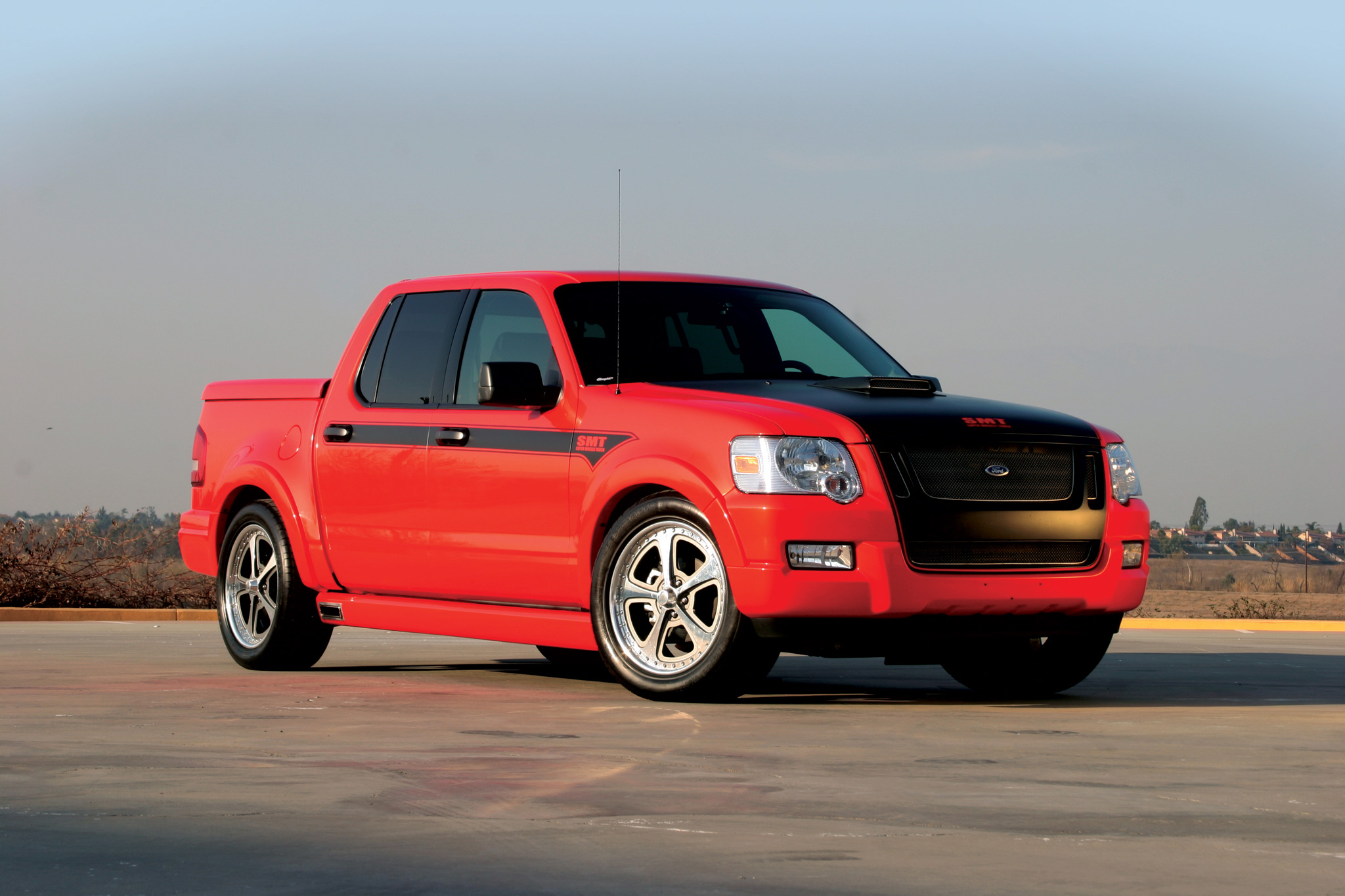
Shops such as Barry’s Speed Shop can take a brand-new, stock vehicle and turn it into a rolling showcase, and do it in a short amount of time. Many of our readers are familiar with Barry White’s “Wrecks to Riches” TV show, as well as the many technical stories we have presented on the work he has done. So when the owners of a company contact White they know they’ll get a vehicle that will attract attention, and it will be built by a shop that makes building outstanding custom vehicles its only business (well, that and being TV stars).
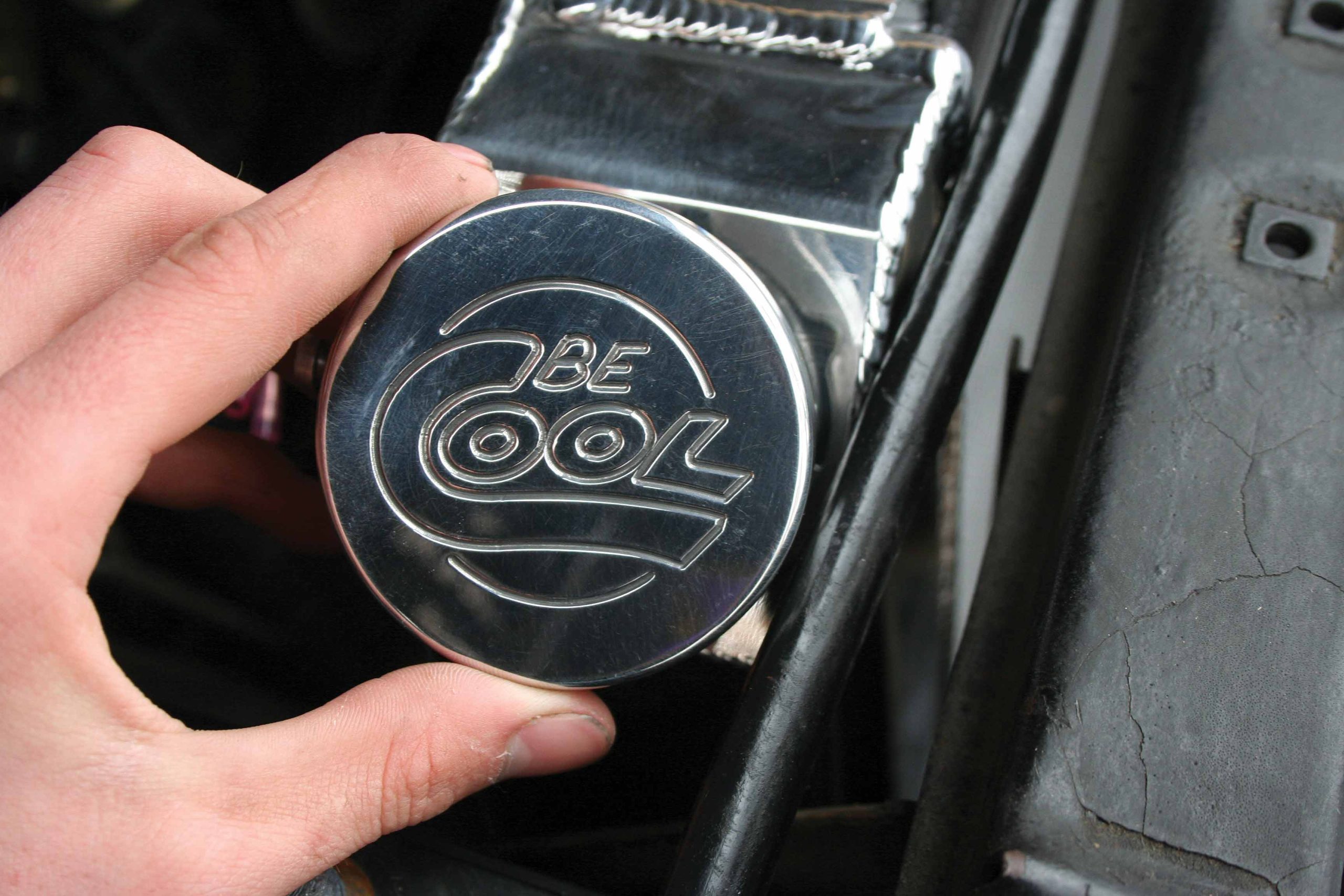
Be Cool is no newcomer to cooling heavy metal. For years it has provided cooling solutions for some of the most impressive high-performance engines to rumble down the streets and dragstrips of America. The folks at Be Cool understand that having the proper cooling components in any car or truck is vital to keep an engine safely within its operating temperature range. They also understand that to make cooling and installation easier, they had to design a full bolt-in system, a system that would fit hundreds of applications for classic cars and trucks, as well as more modern vehicles that also need cooling help.
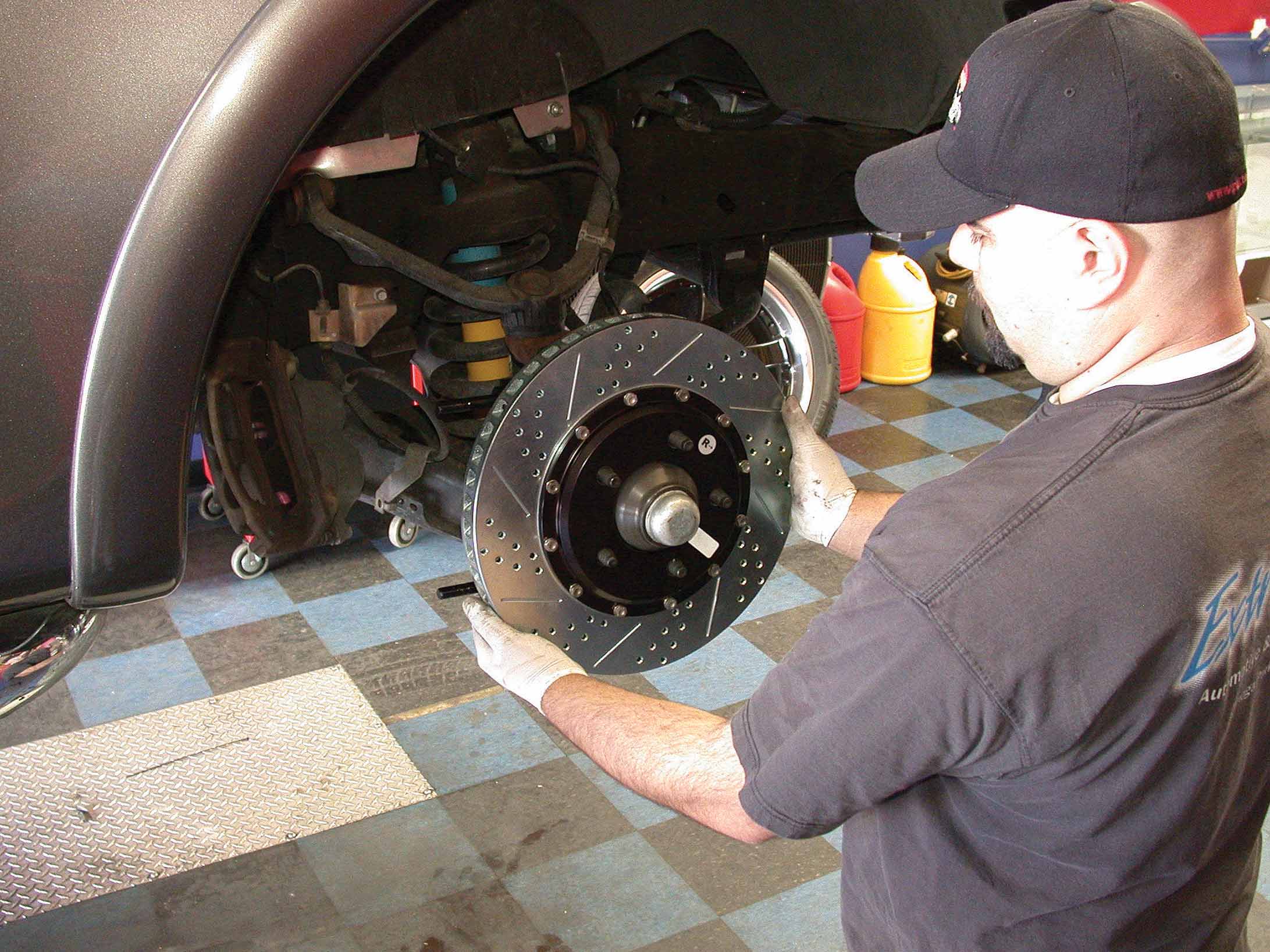
There is no other more important system than braking, so when the folks at Baer told us at the SEMA Show that they were finishing up their latest kit—one designed to fit the Ford F-150, as well as the Expedition, Navigator and Navigator 4WD—we wanted to see one installed. Baer has been producing high-?performance braking systems since 1986. The company specializes in high-performance, bolt-on brake systems that radically enhance the ability of the otherwise stock brake systems.
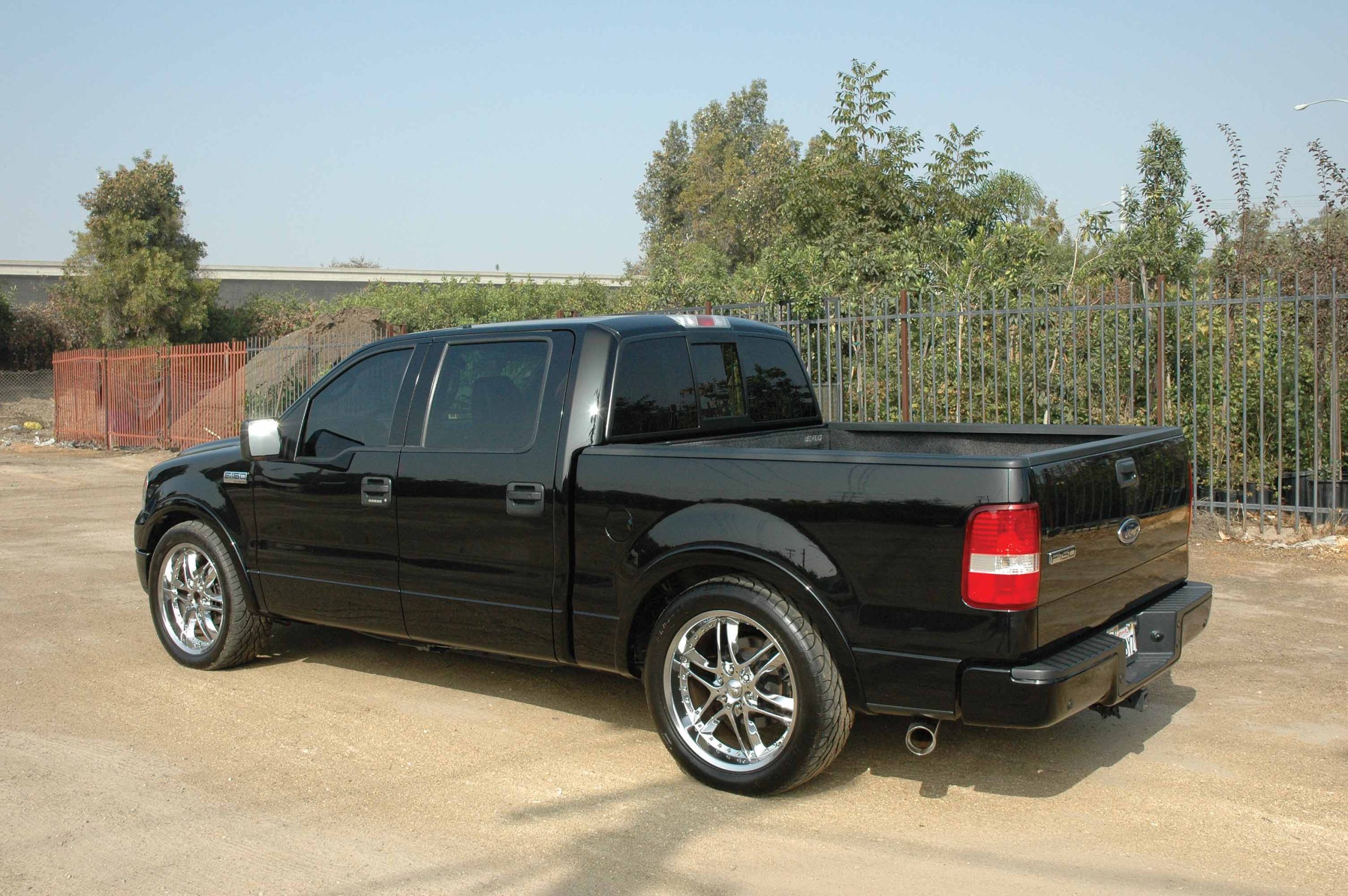
The suspension of stock four-wheel-drive vehicles is deliberately set very high to provide improved ground clearance. For years the trend in serious off-roading has been to “lift” the vehicle even higher. The OEs suspend their four-bys high enough to clear rocks, traverse gulleys and fallen trees and most anything else that one might encounter in more serious off-roading. Nevertheless, there are four-by owners who would like to lower their vehicles, as they spend more time on-road than off. Recently we met just such an owner, and we couldn’t resist questioning him about his desire to drop this ’04 Ford F-150 four-by-four.
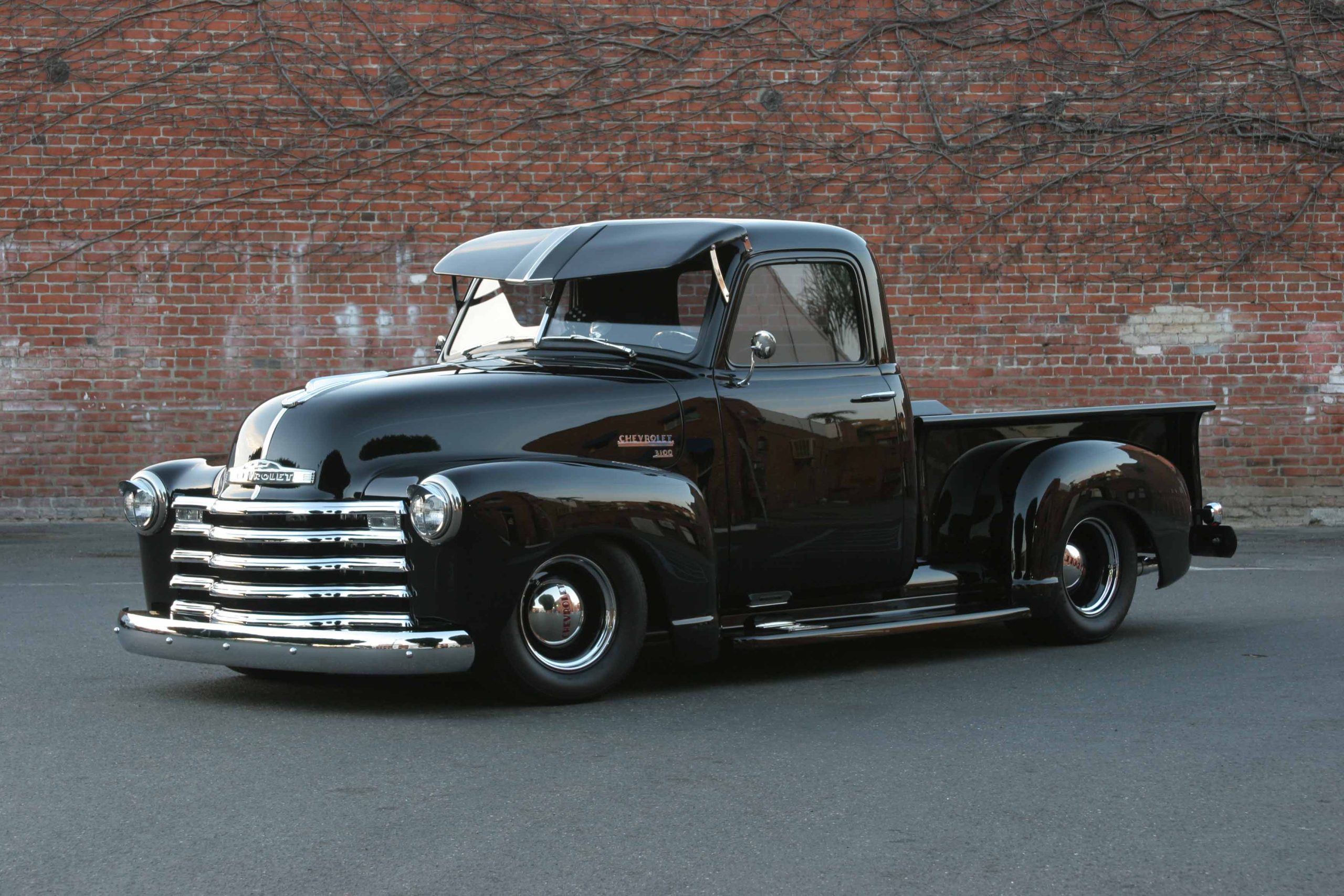
When the owner brought this truck to Buxton in late 04, it was an old farm truck with a straight-six engine, three on the tree and studded snow tires. Buxton began by boxing the frame and adding an IFS unit. With Air Ride Technologies airbags and 2-inch dropped spindles, the front end of the Chevy was able to go very low. In the rear, a Currie Enterprises 9-inch rearend was suspended with ART airbags on a four-link system. Speaking of the rearend, it has been equipped with Strange Engineering 3.73 gears. As the Chevy would obviously come across a few bumps, aluminum QA1 adjustable shocks are used on all four corners. Speaking of the corners, a set of Wheelsmith smoothie wheels adorns this Chevy, giving it a very cool retro look.
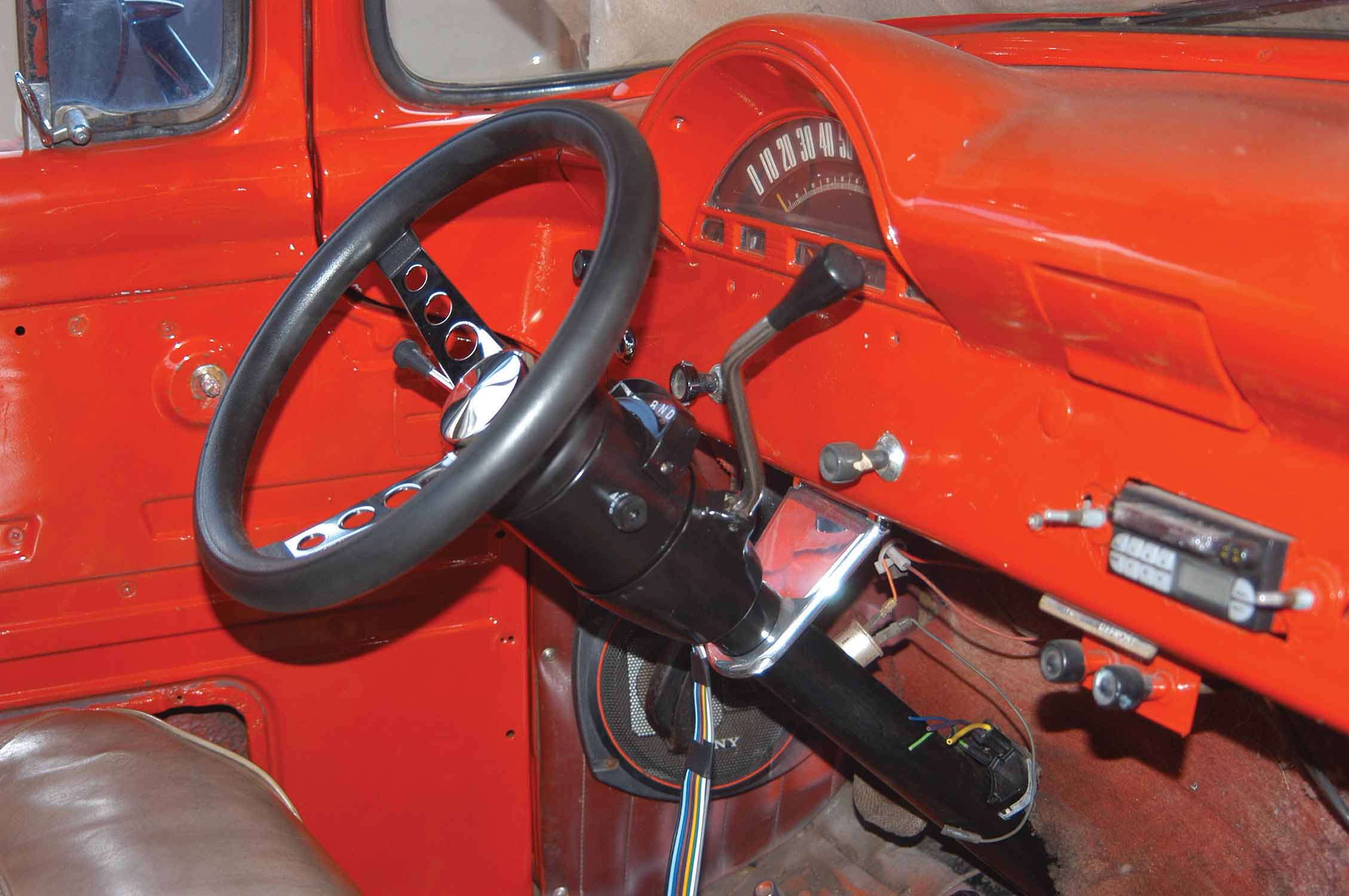
The owner of this ’56 Ford pickup purchased it for a daily driver, and after driving it for a short time decided to make it more comfortable. Still running the original suspension, it rode rough and typically handled like an old truck, which it happens to be. He wanted a softer ride, and for the truck to handle like a modern sports truck, so several chassis improvements were in order.
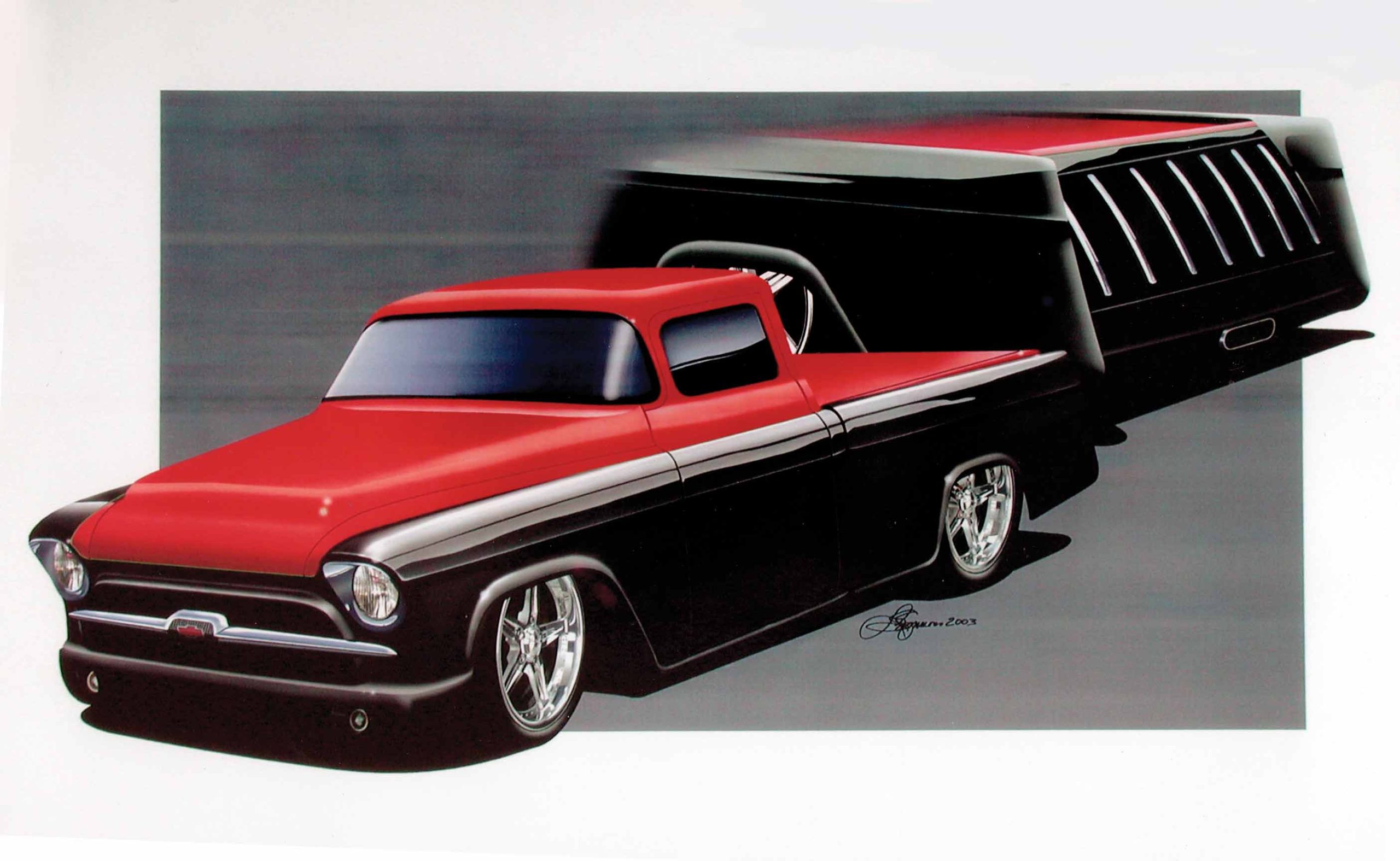
After 1-1/2 years of preparing a rock-solid foundation for our Cimtex Rods-constructed ’56 Chevrolet Super Cameo pickup, the time finally came to hang sheetmetal, but not without experiencing a few major disappointments. “All I can say is, before you buy a truck cab or any kind of old car body, look before you leap,” commented Darrell Cimbanin of Cimtex Rods after picking up our ’56 Chevy big-?window cab from True Grit Sandblasting in Hutto, Texas. This cab was in worse condition than we originally thought. It’s easy to disguise what appears to be a good-looking truck cab with plastic filler and a nice paint job. Sometimes even the experts can be fooled.
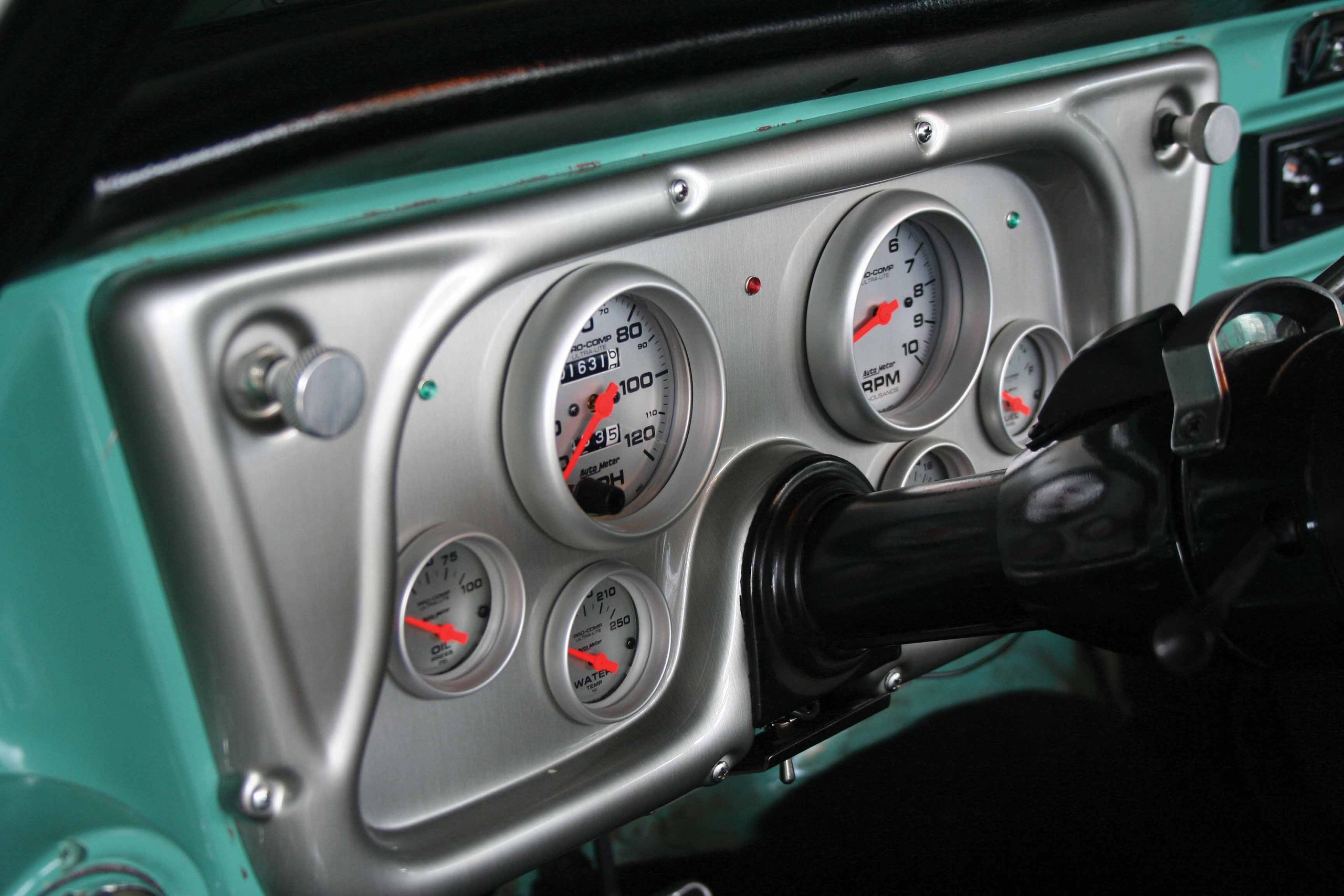
Installing A Covans Classic Molded Gauge Package: Covans Classic, located in Cumming, Georgia, offers a full line of ABS molded dash panels and glovebox doors for classic cars and trucks. The fully molded dashes are designed to be factory replacements, giving a smooth, custom look while accepting common 3-3/8-inch speedometer and tach and 2-1/16-inch oil pressure, water temp, fuel level and volt gauges. The instrument panels feature high-quality molding and are available with or without holes. They can be purchased in brushed aluminum, black, burl wood and carbon fiber. The panels can also be painted to match the interior.
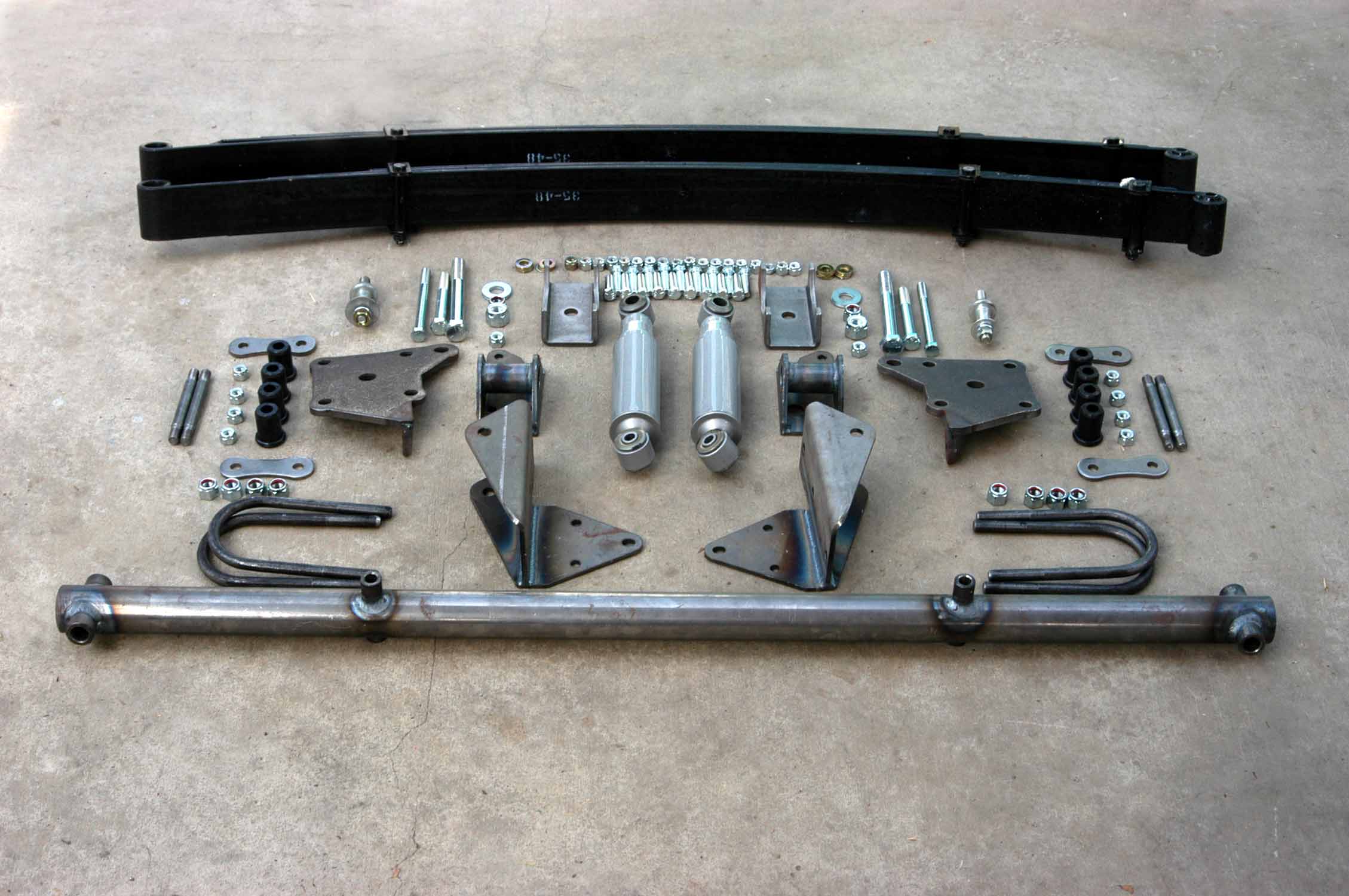
Dean Brown, a longtime rodder, was in the market for a new project car and stumbled across this ’52 Chevy panel truck, which turned out to be one of the original Helms trucks. The bakery cabinets had been removed but the body was in good condition, and it was still running with the original six-cylinder engine. Brown thought the truck was very cool, so he made a deal with its owner and drove it home. He formulated a plan of attack and started acquiring the parts he needed to turn it into a hot Chevy panel. The parts included a strong-running V-8 engine, a Turbo 350 transmission, a Fat Man Fabrications IFS front suspension and a new rear suspension that would provide a softer ride quality.
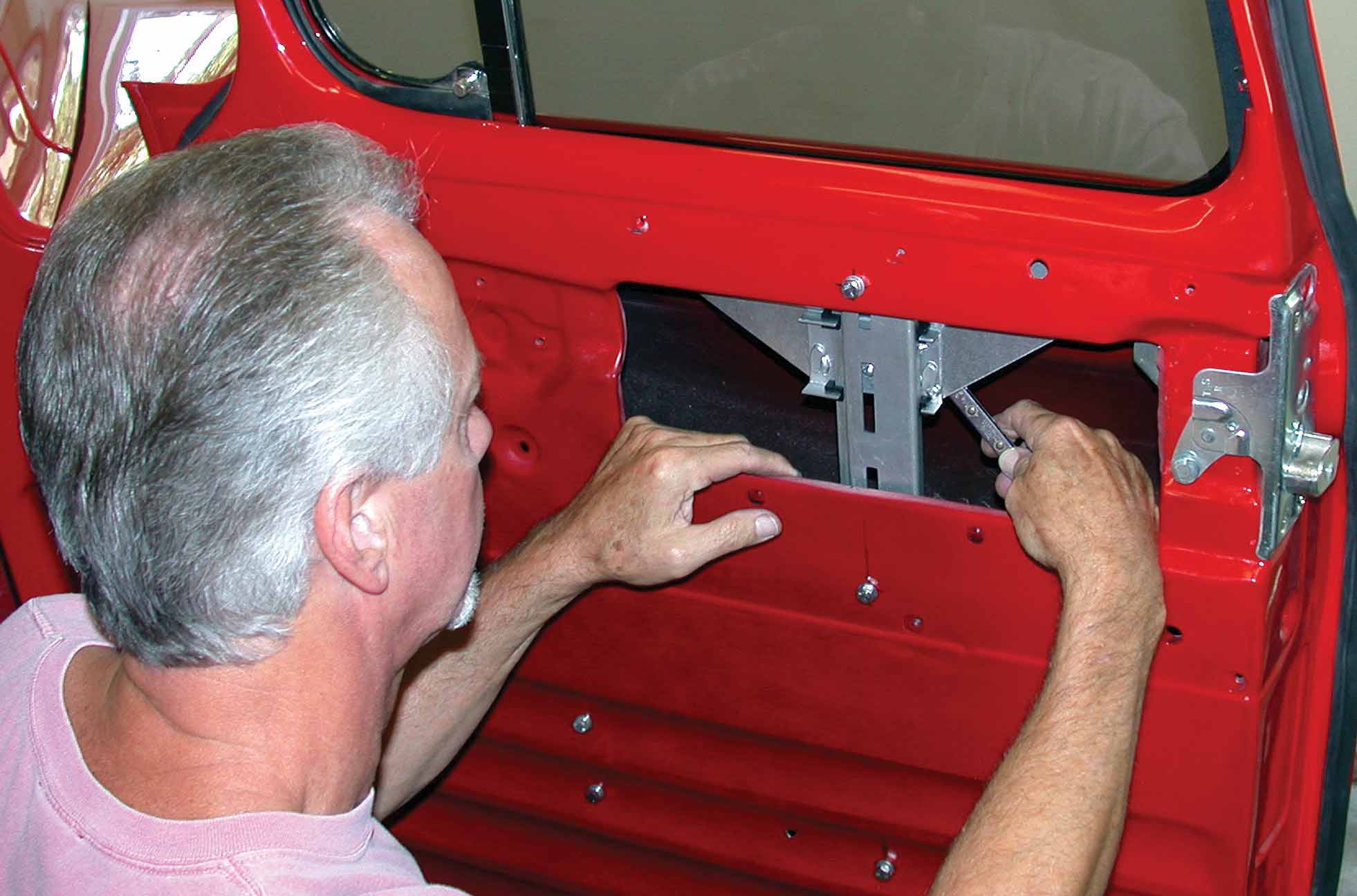
Adding power windows has long been a popular aftermarket option for restyled pickups, as much for practical reasons as for comfort convenience. Worn-out window regulators will give people fits, and replacement parts have become increasingly harder to find, not to mention the lack of availability or the cost of retro units. So, if the vehicle is to have smooth, trouble-free window operation, it’s often easier and cheaper to replace the old regulators with new electric ones.



